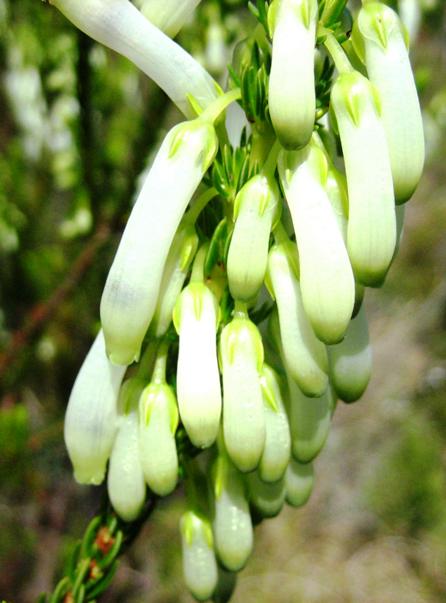|
Botanical name |
Erica mammosa |
|
Other names |
Ninepin heath; rooiklossieheide (Afrikaans) |
|
Family |
Ericaceae |
|
Dimensions |
A woody, multibranched fynbos shrub of 1,7 m |
|
Description of stem |
|
|
Description of leaves |
Tiny, grey-green, lanceolate to linear leaves scattered around branches |
|
Description of flowers |
Profuse maroon, pink, greenish-white or white tubular flowers of 1,5 to 2,5 cm, fluted longitudinally, on peduncle of a few mm on terminal racemes; tube opening fourlobed; flowers appear October to March |
|
Description of seed/fruit |
|
|
Description of roots |
|
|
Variation |
Highly variable flower colours |
|
Propagation and cultivation |
Semi-hardwood cuttings; well-drained soil, but kept moist |
|
Tolerances |
|
|
Uses |
Garden plant in winter rainfall areas |
|
Ecological rarity |
|
|
Pests and diseases |
Several conditions can affect this plant, including powdery mildew, root rot, rust or fusarium wilt, all of which can be controlled |
|
Other |
The oldest specimen in the Pretoria National Herbarium is of E. mammosa, collected in 1811 by W.J. Burchell near Salt River in the Cape; the herbarium contains about 1,2 million specimens |
|
Location |
Sunny slopes in winter rainfall areas on acid, loam ro sandy loam soil in full sun or much sun |
|
Distribution (SA provinces) |
Western Cape |
|
Country |
South Africa |



